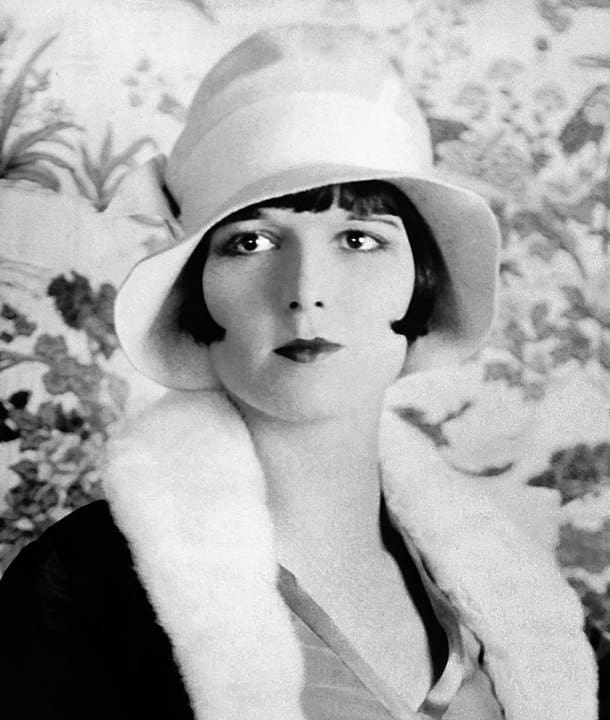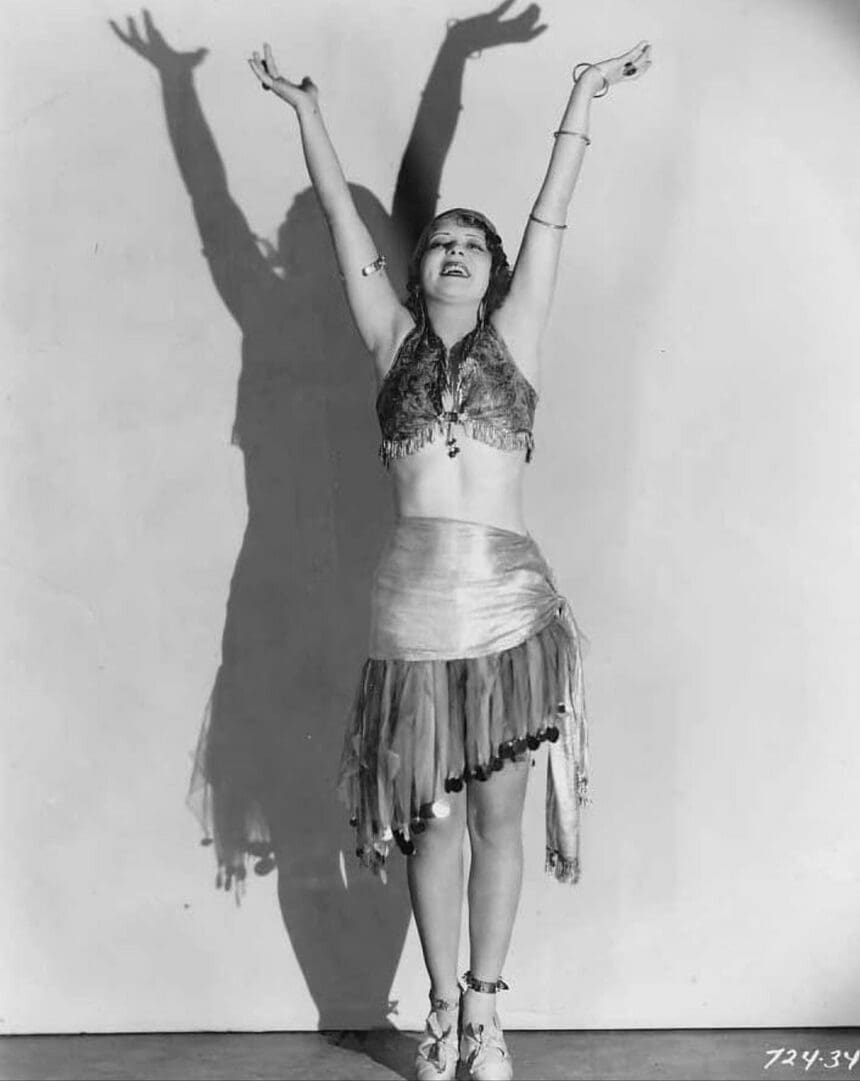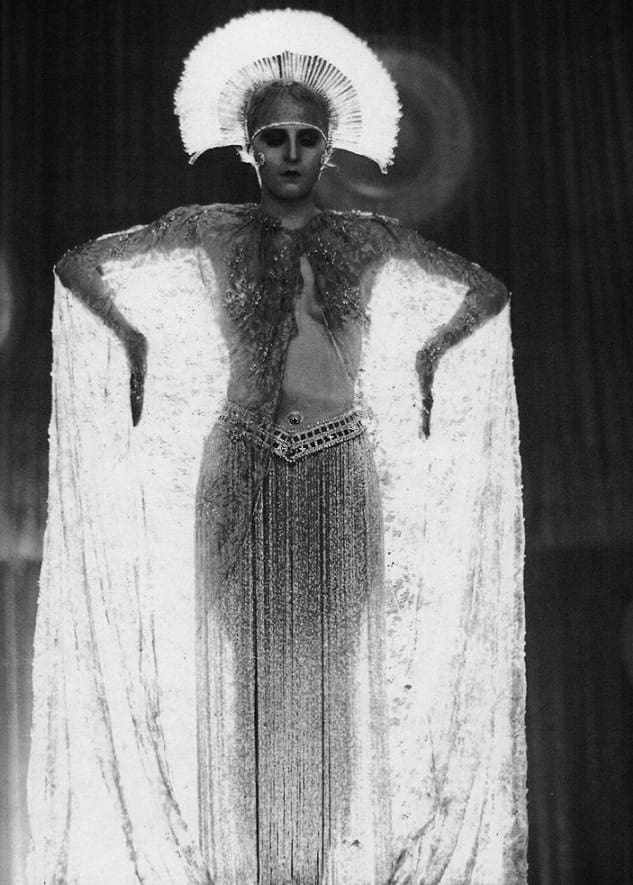Top 20 1920s Actresses
The 1920s was a groundbreaking era for film and the actresses who led the way. As motion pictures transitioned from silent to talkies, a new breed of glamorous starlets emerged. These women defined a look and style that still inspires fashion today. I am fascinated by the trailblazing actresses of this decade who started major acting careers that spanned decades. In this article, I will highlight my picks for the top actresses of the 1920s. From iconic flappers like Clara Bow and Louise Brooks to dramatic talents like Greta Garbo and Lillian Gish, this diverse group of women made their mark during a transformative time for cinema.
Though often overlooked today, these leading ladies were the biggest stars and sex symbols of their day. They drew huge crowds to theaters and established celebrity culture as we know it. Through their strong personalities and trendsetting style on and off screen, these women left a lasting legacy and defined the image of the quintessential 1920s movie star. I hope you enjoy reading about these captivating and glamorous figures from film history as much as I enjoyed researching them.
The following are the top twenty actresses from the 1920s:
1. Mary Pickford

Rufus Porter Moody, Public domain, via Wikimedia Commons
At the top of the list is the famous “American Sweetheart” Mary Pickford. She was one of the biggest stars of the silent film era. Pickford started her career on stage at the age of five and later signed with Biograph Studios in 1909. Some of her most famous films from the 1920s include Pollyanna (1920), Little Lord Fauntleroy (1921), Tess of the Storm Country (1922), and Sparrows (1926). She co-founded United Artists with Charlie Chaplin and others in 1919. Pickford was known for playing young, innocent characters and helping define the stereotype of the wholesome individual. With her legendary blonde curls, Pickford became an international icon and the most famous actress of her time. Her success made her one of Hollywood’s most powerful women.
2. Lillian Gish

Bain News Service; Uploaded by Calliopejen; Edited by jjron., Public domain, via Wikimedia Commons
Lillian Gish was a pioneering silent film actress who had a tremendous impact in the 1920s. Known as the “First Lady of American Cinema,” she started in film alongside her sister Dorothy in 1912 under director D.W. Griffith. Some of her most acclaimed silent films from the 1920s include Broken Blossoms (1919), Way Down East (1920), Orphans of the Storm (1921), and The White Sister (1923). Gish excelled at emotionally complex roles and vulnerable characters. Her expressive acting style and dedication to realism set a high standard for silent film performers. She successfully made the transition to talkies in the 1930s before retiring in the late 1980s with one of the longest careers in Hollywood history.
3. Louise Brooks

Bain News Service, Public domain, via Wikimedia Commons
Meet Louise Brooks, the quintessential flapper of the 1920s. Known for her iconic bob haircut and rebellious persona, Brooks rose to fame in silent films like A Girl in Every Port (1928) and The Canary Murder Case (1929). But her most legendary roles were as Lulu in Pandora’s Box (1929) and Diary of a Lost Girl (1929), two controversial German productions. Brooks exuded an effortless sensuality and modernity that encapsulated the Jazz Age. Though she acted for only ten years, her daring image and progressive womanhood embodied the spirit of the Roaring Twenties. Revered as a cinematic legend after her acting career, Louise Brooks’ legacy as a symbol of uncompromising female independence continues to inspire artists today.
4. Greta Garbo

Arnold Genthe, Public domain, via Wikimedia Commons
The Swedish actress Greta Garbo became an international sensation in the late 1920s, starring in silent films like Flesh and the Devil (1926) and Love (1927). Renowned for her dramatic acting and exquisite beauty, Garbo seamlessly transitioned to talkies with her deep, accented voice. Hits like Anna Christie (1930) and Grand Hotel (1932) cemented her status as one of Hollywood’s biggest stars. Garbo became famous for her portrayals of strong, sophisticated women and her magnetic onscreen presence. She cultivated an aura of mystery and elusiveness with the press, which added to her allure. Though she shunned the limelight, Garbo’s unforgettable elegance and subtle power established her as one of the defining leading ladies of the 1920s and 30s. She forever changed the image of the cinematic femme fatale.
5. Joan Crawford

George Hurrell, Public domain, via Wikimedia Commons
Here is an actress who defied all odds to become a superstar. Joan Crawford began her career in the mid-1920s as a dancer and chorus girl before becoming one of the most glamorous stars of the decade. After signing with MGM in 1925, she made a splash in silent films like Sally, Irene, and Mary (1925) and Our Dancing Daughters (1928), displaying her energetic style and sex appeal. Her heavily made-up eyes and large, expressive mouth became her trademarks, along with her short, bobbed hairstyle. On-screen and off, Crawford’s fashionable persona and fierce independence exemplified the Modern Woman of the 1920s. She successfully transitioned to talkies, remaining a major Hollywood star for decades after.
6. Gloria Swanson

RKO Studio, Public domain, via Wikimedia Commons
The silent film era would never be what it was without Gloria Swanson. She initially rose to fame in comedies like Don’t Change Your Husband (1919) and Why Change Your Wife? (1920) displaying her gift for physical comedy and timing. Swanson became one of Cecil B. DeMille’s favorite actresses, starring in serious dramas like Male and Female (1919) and The Affairs of Anatol (1921). Her most iconic role was as the troubled, extravagant Norma Desmond in Sunset Boulevard (1950). Swanson’s flair for drama and opulent fashion defined the glitz and excess of the Roaring Twenties. She embodied the lavish lifestyle of a silent movie queen with her jewels, furs, and palatial mansions.
7. Edna Purviance

University of Washington, Public domain, via Wikimedia Commons
Edna Purviance was the leading lady in many of Charlie Chaplin’s early silent comedy films of the 1920s. Having met Chaplin in 1915, she went on to appear in over thirty of his shorts and features like The Kid (1921), The Gold Rush (1925), and The Circus (1928). Purviance displayed a natural grace and charm that balanced Chaplin’s tramp character on screen. She often played the object of his affection in sweet, innocent roles. Though she hoped to have a varied career apart from Chaplin, Purviance continued working steadily with him into the late 1920s. While less remembered today, Purviance’s collaboration with Chaplin made her one of the most familiar faces of silent cinema during the 1920s.
8. Clara Bow

See page for author, Public domain, via Wikimedia Commons
Meet another star from the 1920s, Clara Bow. With her bobbed red hair and infectious charm, Bow rose to stardom in smash hits like Mantrap (1926), Wings (1927), and It (1927). Her natural acting style and effervescent screen presence radiated modernity. As one of Hollywood’s biggest box office draws, Bow epitomized the fun-loving, reckless spirit of the Jazz Age. However, Bow retired from acting in the early 1930s, struggling with the transition to talkies. Her tremendous impact as the embodiment of Roaring Twenties youth culture ensures her legacy as a cultural icon and one of the most celebrated actresses of the decade.
9. Janet Gaynor

L’ECO DEL CINEMA – n. 97, dicembre 1931, Public domain, via Wikimedia Commons
Do you know the first lady in the 1920s to win the first Academy Award for Best Actress? Her name is Janet Gaynor. She rose to prominence in romantic films like 7th Heaven (1927), Street Angel (1928), and Sunrise (1927) for which she won her Oscar. Gaynor excelled at playing a character that brought a natural innocence to her roles. Her three 1927 films with director F.W. Murnau exemplified the heights of cinematic artistry in the silent era. Gaynor ranked in the top box office draw from 1928-1932 thanks to her sweet screen persona. As the first winner of Hollywood’s highest honor, Janet Gaynor pioneered achievements for actresses in the nascent studio system.
10. Marion Davies

Revista Caras y Caretas (Argentina), Public domain, via Wikimedia Commons
Marion Davies was a Broadway star who became a popular comedic actress during the 1920s under the patronage of newspaper mogul William Randolph Hearst. Known for her bubbly onscreen persona, Davies appeared in hit silent films like The Bride’s Play (1922) and The Patsy (1928). She struggled to gain respect as a serious dramatic actress due to Hearst’s control over her career. However, Davies’ vivacious charm in lighthearted roles made her one of the most beloved and highly paid stars of the decade. Her lavish lifestyle with Hearst also fueled her celebrity. She was a gifted comedian who brought joy to moviegoers in the early days of Hollywood.
11. Brigitte Helm

Horst von Harbou, Public domain, via Wikimedia Commons
Though little known today outside of cinephile circles, German actress Brigitte Helm was an iconic star of 1920s silent cinema. She is known for her dual role as Maria and the Maschinenmensch robot in Fritz Lang’s pioneering sci-fi masterpiece Metropolis (1927). With her wide expressive eyes and versatility, Helm perfected the innocent heroine as well as the robotic femme fatale. However, Helm retired from acting in 1935 at just 28 years old. Though her career was short-lived, Brigitte Helm’s striking screen presence in Metropolis cemented her place as one of the most unforgettable icons of Weimar-era German cinema.
12. Dale Fuller

Unknown photographer, Public domain, via Wikimedia Commons
A regular in silent comedies throughout the 1920s, Dale Fuller often played sharp-tongued maids and secretaries. Getting her start in Mack Sennett productions like Love, Honor, and Behave (1920), Fuller went on to appear in films with comedy stars like Harold Lloyd and Lupino Lane. She had one of her best-known roles as the stern secretary of Rex Cherryman’s playboy character in The Poor Nut (1927). With her deadpan humor and vinegary attitude, Fuller typically portrayed supporting characters who acted as foils to the story’s romantic leads. Her comic talents and instantly recognizable face made her a ubiquitous presence in over a hundred silent films of the Roaring Twenties era.
13. Jobyna Ralston

Photoplay magazine, Public domain, via Wikimedia Commons
Jobyna Ralston was another well-liked leading lady in 1920s silent comedy films. As a young actress, she secured roles in Hal Roach comedies and often starred opposite comic actor Harold Lloyd in hits. With her wholesome beauty and charming manner, Ralston provided the perfect romantic foil to Lloyd’s slapstick underdog characters. Though she hoped to transition to sound films, Ralston retired from acting in the early 1930s after securing her place as one of silent cinema’s most delightful actresses. She was a gifted comedian who brightened the screens of the 1920s as an emblem of the all-American girl next door.
14. Lil Dagover

Elmer Fryer (1898-1944), Public domain, via Wikimedia Commons
Lil Dagover’s outstanding beauty and theatrical skill won her praise from Germany in the 1920s. She became well-known for her roles in German Expressionist films such as Tartuffe (1925), The Love of Jeanne Ney (1927), and The Cabinet of Dr. Caligari (1920). Dark and passionate parts, such as multiple portrayals of Cleopatra, are what made Dagover famous. She collaborated with filmmakers such as F.W. Murnau and G.W. Pabst at the height of the Weimar Republic’s innovations. Her collaborations with avant-garde directors solidified her reputation as one of the greatest European cinema icons of the 1920s. In Germany’s film history, she is still a significant character.
15. Kathryn McGuire

Unknown photographer, Public domain, via Wikimedia Commons
Many actresses defined the 1920s silent era, including Kathryn McGuire. She got her start acting on stage before breaking into movies in 1920. McGuire often starred opposite comedy legend Buster Keaton, playing his romantic interest in films like Sherlock Jr. (1924) and The Navigator (1924). She brought an energetic charm to those ingenious comedies. However, her career faded with the coming of sound. Her vivacious and comedic performances alongside Keaton and others make her an unsung actress of the silent film era. Her work contributed to some of the most inventive Hollywood comedies of the 1920s.
16. Mary Philbin

Hartsook Photo, Public domain, via Wikimedia Commons
A well-known silent film star in the 1920s was Lil Dagover. The German was recognized for her extraordinary beauty and dramatic ability. She was born in Java to German parents. Dagover rose to fame by portraying empathetic, gloomy characters, such as Cleopatra in several parts. During the creative height of the Weimar era, she collaborated with directors like F.W. Murnau and G.W. Pabst. Her on-screen persona solidified her reputation as one of the greatest European cinema idols of the 1920s. She continues to play a significant role in German film history.
17. Anna May Wong

Paramount photo, Public domain, via Wikimedia Commons
Some actresses were impressive, while others like Anna May Wong made history. She became the first Asian-American film actress. Wong had breakout roles in silent films like The Toll of the Sea (1922) and Thief of Bagdad (1924). She became famous for glamorous, mysterious characters that played into Western stereotypes. Wong fought against racial stereotyping and was outspoken about the limited opportunities for Asian actors in Hollywood. Though often relegated to supporting parts, her memorable performances in films like Piccadilly (1929) made her an international star. Anna May Wong’s considerable acting talents and resilience in the face of discrimination make her an inspirational and groundbreaking figure of 1920s cinema.
18. Claire McDowell

unknown (Metro-Goldwyn-Mayer), Public domain, via Wikimedia Commons
Claire McDowell was a prolific supporting actress who appeared in over three hundred films throughout the silent era of the 1910s and 1920s. Often portraying mothers and matriarchal figures, McDowell had notable roles in D.W. Griffith’s films like Intolerance (1916) and Broken Blossoms (1919). Her imposing presence was also put to comic use in shorts alongside comedians like Charlie Chaplin and Mack Sennett. Though never the leading lady, McDowell’s output was impressive and she embodied the quintessential character actress of silent Hollywood.
19. Norma Shearer

Bain News Service, Public domain, via Wikimedia Commons
Here is a woman who looked unstoppable from the beginning, Norma Shearer. Her breakout performance came in 1923’s The Waning Sex, establishing her as an up-and-coming leading lady. Shearer seamlessly transitioned to talking pictures, receiving acclaim for films like The Divorcee (1930) and A Free Soul (1931), winning a Best Actress Oscar for the former. Her portrayal of empowered, sexually liberated women defined a bold new femininity in the early sound era. With poise and allure, Shearer became one of the top stars from the late 1920s through the 1930s.
20. Barbara Kent
Though last on the list, Barbara Kent was not last during the late silent film era of the 1920s. She often played spunky, everyday heroines in comedies and dramas. Kent rose to fame as the star of one of the top-grossing films of the 1920s, Flesh and the Devil (1926). She followed it up with roles in films like The Drop Kick (1927) and Harold Teen (1928). Kent successfully transitioned to talkies and starred in early sound films like Lights of New York (1928), one of the first all-talking features. Though her career stalled in the 1930s, Barbara Kent’s vivacious flapper persona and girl-next-door appeal made her a standout starlet of late 1920s cinema.
As we have seen, the 1920s produced some of the most memorable leading ladies in cinematic history. Their beauty, charisma, and avant-garde style made them the biggest stars of the burgeoning film industry. Though times have changed, these women continue to inspire and influence pop culture today. I loved spotlighting these groundbreaking talents who shaped an iconic era in Hollywood.
Planning a trip to Paris ? Get ready !
These are Amazon’s best-selling travel products that you may need for coming to Paris.
Bookstore
- The best travel book : Rick Steves – Paris 2023 – Learn more here
- Fodor’s Paris 2024 – Learn more here
Travel Gear
- Venture Pal Lightweight Backpack – Learn more here
- Samsonite Winfield 2 28″ Luggage – Learn more here
- Swig Savvy’s Stainless Steel Insulated Water Bottle – Learn more here
Check Amazon’s best-seller list for the most popular travel accessories. We sometimes read this list just to find out what new travel products people are buying.








